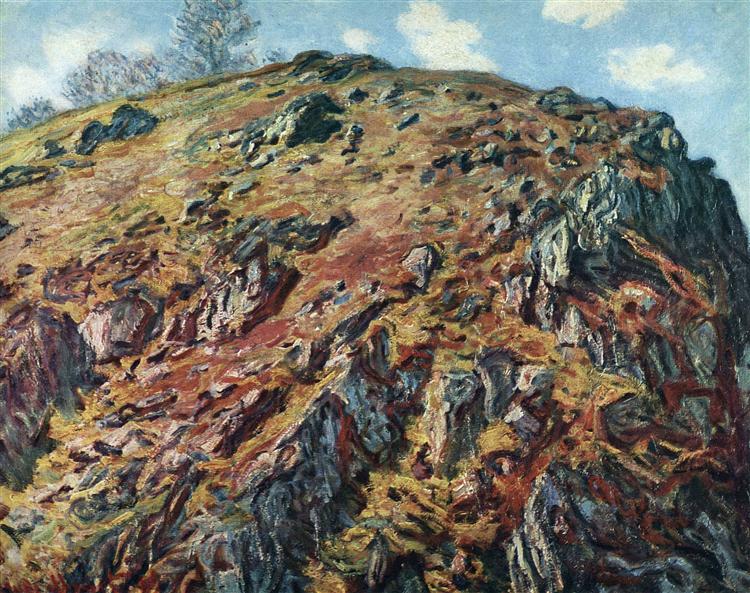Beschrijving
In Claude Monet's painting "Study of Rocks" (1889), the viewer is confronted with a work that encapsulates the essence of Impressionism through a meticulous study of light and natural form. Monet, a pioneer in the use of color and visual perception, stands out in this piece for the complexity of his textures and the vibrant palette he employs. In this painting, the artist immerses himself in a representation of the coastal landscape, where rocks, water and atmosphere intertwine in an almost poetic way.
The composition focuses on several rocks emerging from the sea, immersed in a play of light and shadow that adds depth and dynamism to the scene. The rock masses are painted in a varied range of tones, from deep greys and browns to subtle greens, suggesting vegetation clinging to the irregular surfaces of the rocks. Monet manages to capture the texture of the rocks with loose, energetic brushstrokes, which gives the work a vibrant and spontaneous character that is distinctive to his style.
The use of colour is central to the work and reflects Monet’s ability to observe and reproduce the light in his surroundings. The slope of the rocks is illuminated by the sun, creating a dramatic contrast with the deep blue of the sea in the background. This interplay between light and shadow not only defines the shape of the rocks, but also establishes an atmosphere of change, capturing the subtleties of a moment in nature that, while ephemeral, feels eternal in the viewer’s gaze.
Unlike many of his best-known works, Study of Rocks features no human or animal figures, instead focusing exclusively on the landscape. This approach allows the viewer to contemplate the majesty of nature without distraction, inviting a deeper meditation on the natural environment. Monet, known for his seascapes and their relationship with light, captures here a moment without the human interactions that often mark his other works.
The context of this painting is also of interest. Monet was immersed in the study of light and form, exploring different brushstroke techniques that would later become an essential part of the Impressionist repertoire. This work occurs in a period when the artist devoted his time to outdoor studies, seeking to capture the essence of the moment at its finest. "Study of Rocks" can be seen as a testament to that process, an exploration of nature in its purest form.
Thus, this work offers a window into Monet's unique vision, who transformed the canvas into a space for sensorial exploration. Through his attention to detail in textures and his mastery in the use of color, he invites the viewer to experience the atmosphere of the scene, a fleeting moment of connection with the landscape. "Study of Rocks" is not only a visual representation, but a dialogue between the artist and the natural world that surrounded him, highlighting the endurance of his legacy in the history of art.
KUADROS ©, a famous painting on your wall.
Hand-made oil painting reproductions, with the quality of professional artists and the distinctive seal of KUADROS ©.
Painting reproduction service with satisfaction guarantee. If you are not completely satisfied with the replica of your painting, we will refund 100% of your money.

